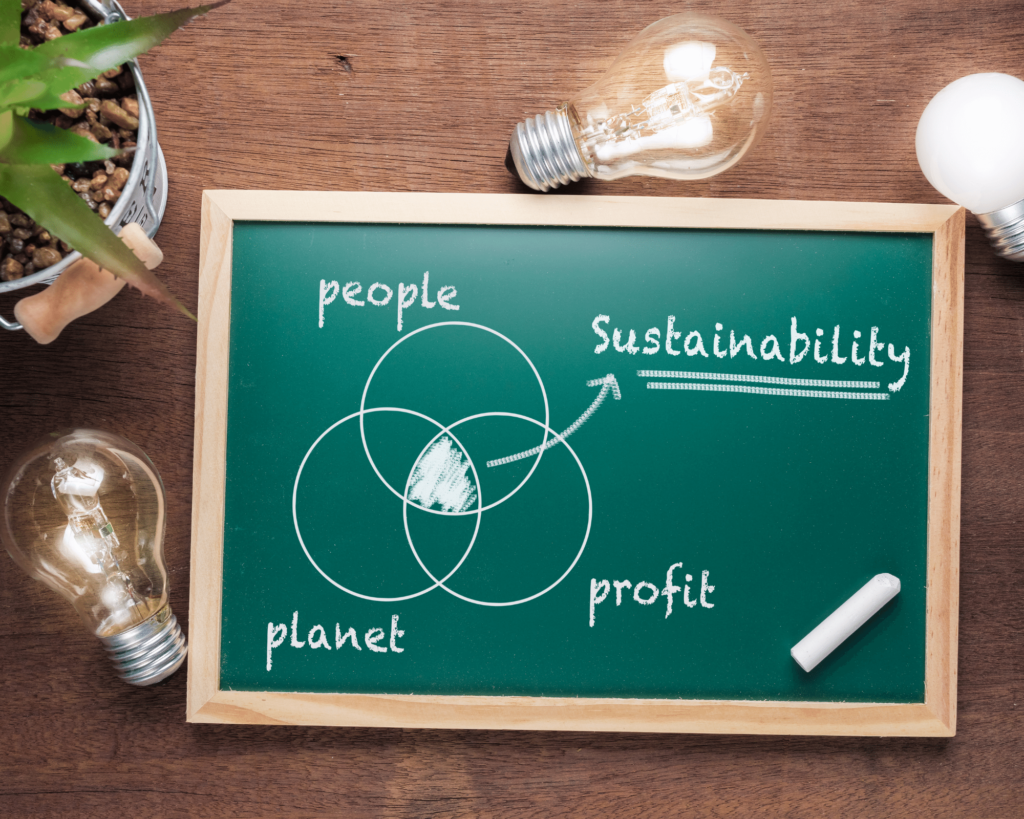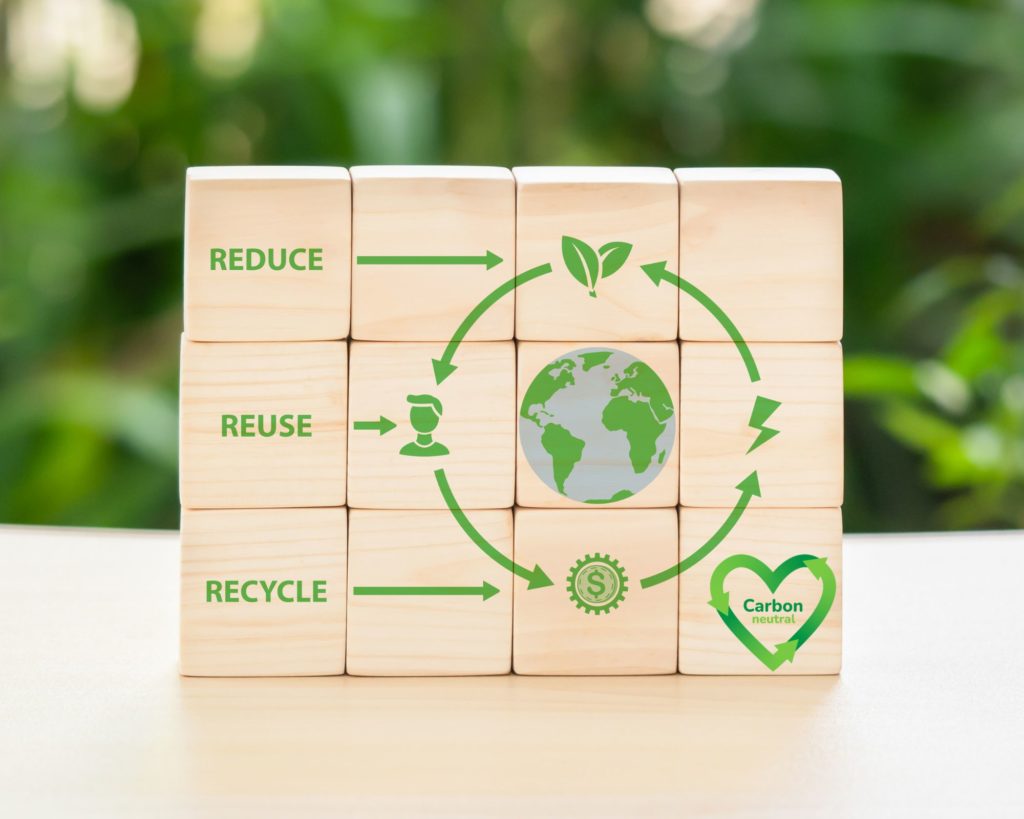The planet is warming. Its temperature has already increased by 1.1°C since 1850. If we do not act, we risk increasing it by 4°C by 2100 1. We all have a central role to play. What are the sustainable development commitments taken and to be taken? In a context whereecology has become a major concern, Hoist Medical is also involved. It is no longer just about corporate social responsibility but a true paradigm shift.
Sustainable development challenges
Environmental protection is now at the heart of our concerns, both in our daily lives and in the professional activities. Climate change, pollution, ecosystems and biodiversity degradation, depletion of natural resources, and waste accumulation are major heath determinants. The challenges are numerous. Implementation concrete actions in environmental protection requires collective public-private awareness of the fragility of our planet 's resources and the necessity to develop effective policies to encourage necessary transformations within organisations.
"The future is not what will happen but what we will do.
Henri Bergson

our commitment to environmental protection
In addition to complying with legislative framework, Hoist Medical implements voluntary environmental initiatives.
Conserving resources
Recognizing that the entire economy depends directly or indirectly on the proper management of natural resources, the environment, biodiversity and the proper functioning of ecosystems, these initiatives involve a preliminary acknowledgment of the effects of our activity on the environment. In this context, Hoist Medical is commits to :
- investing in a resource-efficient management approach, such as raw materials or water;
- implementing measures to improve energy efficiency and reduce greenhouse gas emissions;
- Developing an action plan to enhance energy efficiency, reduce greenhouse gas emissions and develop renewable energies;
- encouraging all employees to use trains or public transport for business travel.
Taking action for sustainable development in our daily lives
Hoist Medical is committed to the implementation of :
- Limitation of waste production.
- Reduction in the use of plastics.
- Recycling, reduction and recovery of waste.
- Recycling of obsolete production equipment.
- Integration of recycled products in these production processes
- Closed-loop water treatment or reuse.
- Make environmentally responsible purchases.
- Supporting eco-gestures.
- Strengthen the company's culture in the field of environmental preservation.
In short, through our commitment to sustainability, social progress andimproved patient comfort and health, we aim to generate equally profitable and sustainable growth now and for many years to come.
Reducing Carbon Emissions
Aware of the growing demands of the European market regarding carbon emissions reduction, Hoist Medical is actively committed to combating climate change. Our goal is to minimize our carbon footprint at every stage of our production chain. To achieve this, we have implemented several key initiatives.

Optimizing energy efficiency
We invest in cutting-edge technologies to improve the energy efficiency of our facilities and reduce energy consumption.
Implementing eco-friendly practices
Simple actions such as turning off lights, lowering the temperature in our premises, sorting waste correctly, and no leaving water running unnecessarily are eco-friendly practices that should become habits for our employees.
Using second-hand or refurbished equipment
To reduce our company's carbon footprint, we purchase refurbished equipment that is less expensive and has a lower environmental impact. For example, a laptop consumes 80% less energy than a desktop computer.
Reducing home-to-work commutes
Commuting contributes to making the transport sector one of the largest emitters of CO2 in France. It also represents a significant source of stress for employees due to the delays, accidents, traffic jams. Offering employees a few days of telecommuting each month helps optimize their productivity while reducing the company's carbon footprint.
Finding an alternative to business travel
Videoconferencing and the widespread adoption of virtual meetings since the pandemic help avoid many travel-related carbon emissions.
Regular monitoring with the Bilan Carbone® methodology from ADEME
We regularly inform and ajust our practices using the standard "Bilan Carbone®" methodology from ADEME to evaluate and reduce our greenhouse gas emissions (https://bilans-ges.ademe.fr/).
Five-Year Carbon Reduction Plan
To concretize our commitment, we have developed a five-year carbon reduction plan:
Year 1: Baseline Assessment and Initial Reductions
- Conduct a Carbon Footprint Assessment :
- Measure current carbon footprint.
- Identify the main sources of emissions (energy consumption, transport, waste).
- Definition of Clear Targets :
- Establish a realistic carbon reduction target (10% reduction in the first year).
- Energy Efficiency Improvements :
- Upgrade lighting to LED fixtures throughout the facility.
- Implement energy-efficient heating, ventilation and air conditioning (HVAC) systems.
- Conduct energy audits to identify and adress other inefficiencies.
- Employee Engagement :
- Launch an awareness campaign to educate employees about carbon reduction goals and practices.
- Create a green team to lead sustainability initiatives.
Year 2: Optimizing Operations and Supply Chain
- Green Procurement :
- Source raw materials and components from suppliers with sustainable practices.
- Implement a green procurement policy favoring local suppliers to reduce transport-related emissions.
- Renewable Energies :
- Install solar panels or enter into a green power purchase agreement to offset electricity use.
- Assess the feasibility of on-site renewable energy production (wind, solar).
- Waste reduction :
- Implement a comprehensive recycling program for manufacturing waste.
- Optimize production processes to minimize scrap and rework.
- Transport and Logistics :
- Optimize logistics to reduce transport emissions (route optimization, use of efficient vehicles).
- Encourage carpooling, biking and public transport for employees.
Year 3: Advanced Technological Integration
- Digital Transformation :
- Adopt digital tools to monitor and optimize energy use in real time.
- Implement predictive maintenance to reduce downtime and improve equipment efficiency.
- Sustainable Product Design :
- Focus R&D on designing products with reduced environmental impact (use of biodegradable materials).
- Explore opportunities to make products more energy-efficient during use.
- Water Conservation :
- Implement water-saving technologies and practices in manufacturing areas and offices.
- Recycle and reuse water wherever possible.
Year 4: Carbon Offsetting and Community Commitment
- Carbon offsetting :
- Invest in verified carbon offset projects to compensate for unavoidable emissions.
- Participate in reforestation or renewable energy projects.
- Community Engagement :
- Collaborate with local communities on sustainability projects.
- Sponsor environmental education programs and workshops.
- Transparency and reporting :
- Publish an annual sustainability report detailing progress and challenges.
- Involve stakeholders by sharing successes and seeking feedback for continuous improvement.
Year 5: Achieving and sustaining carbon neutrality
- Continuous Improvement :
- Review and update carbon reduction strategies in line with the latest technologies and practices.
- Set new targets for further reductions beyond the initial five-year plan.
- Certification and Recognition :
- Seek certification for sustainability efforts (ISO 14001, LEED certification for facilities).
- Apply for awards and recognition for your company's commitment to sustainability.
- Long-term sustainability integration :
- Integrate sustainability into the company's core business strategy.
- Ensure that all future projects and expansions take environmental impacts into account from the outset.
This five-year plan outlines a structured approach for the company to reduce its carbon footprint, enhance sustainability practices and ultimately achieve carbon neutrality. Through a combination of energy efficiency, renewable energy adoption, waste reduction, sustainable procurement and employee engagement, Hoist Medical will make significant strides in reducing its environmental impact. Regular monitoring, reporting and continuous improvement will ensure the long-term success and sustainability of these efforts.
1 https://www.statistiques.developpement-durable.gouv.fr/chiffres-cles-du-climat-france-europe-et-monde-edition-2022
